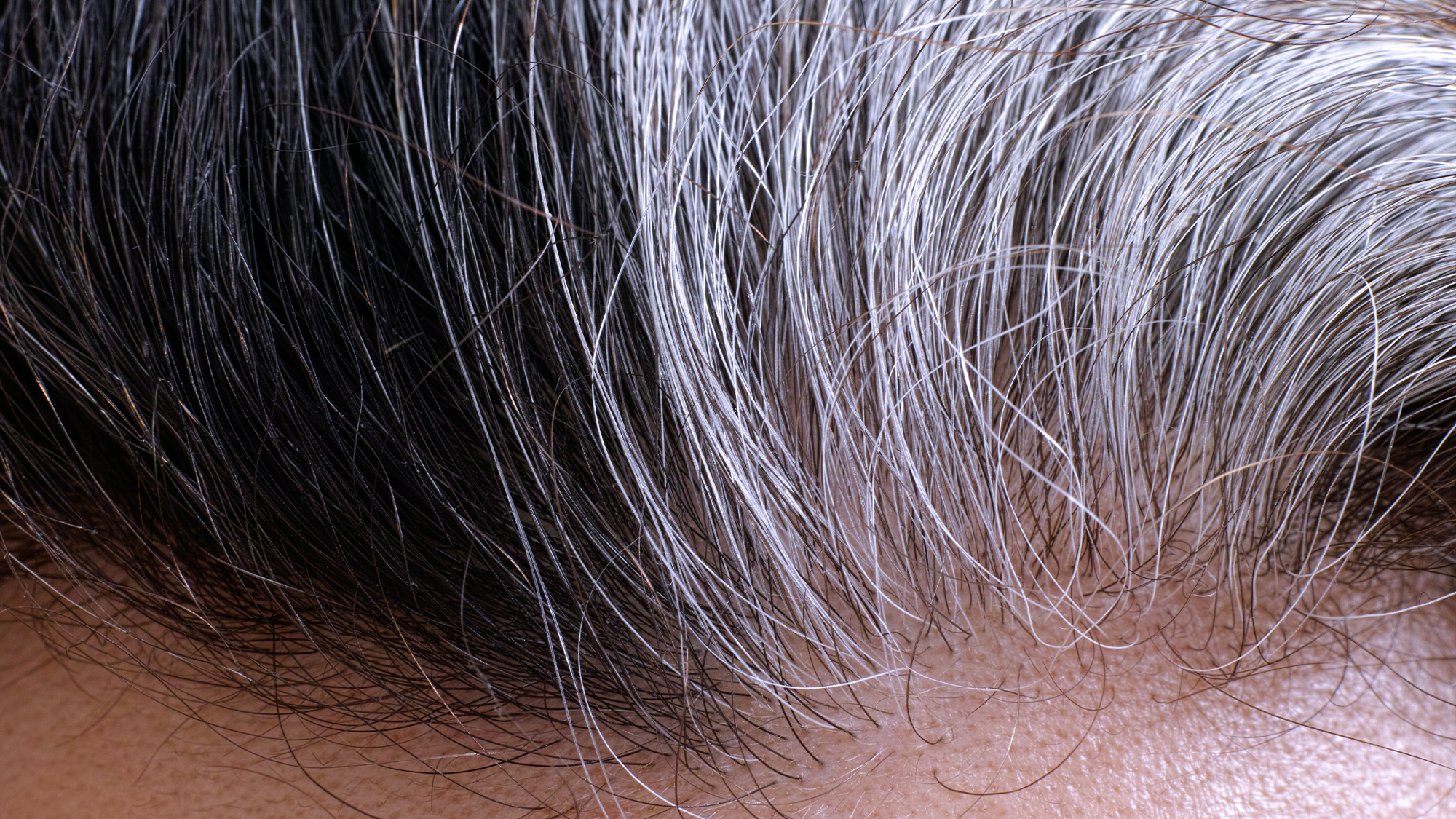

Aging has been said to be a “privilege denied to many”—and gray hair typically accompanies that privilege. Gray hair can also be caused by stress, but scientists might be closer to figuring out exactly why even the most colorful hair turns gray with age. A study published April 19 in the journal Nature found that certain stem cells have a unique ability to move between the growth compartments in hair follicles, but they get stuck and lose their ability to mature and maintain hair color as people age.
[Related: We finally know why stress turns your hair white.]
The melanocyte stem cells (McSCs) in hair follicles are responsible for producing and maintaining the pigment in our hair. Every hair follicle stores immature melanocyte stem cells, and when they’re needed, the cells travel from one part of the follicle to another. When they reach other parts of the follicle, proteins turn them into more mature pigment-producing cells, and give hair its hue. Inside these follicle’s compartments, McSCs are exposed to different levels of maturity-influencing protein signals as a person ages.
According to the study, which McSC cells from mice, as hair ages, sheds, and then repeatedly grows back, more McSCs get stuck in a stem cell compartment called the hair follicle bulge. While there, they stay put, unable to mature or be able to move between follicle compartments. They also do not travel back to their original location where WNT proteins would have prodded them to regenerate into pigment cells.
“Our study adds to our basic understanding of how melanocyte stem cells work to color hair,” study co-author and New York University computer engineer Qi Sun said in a statement. “The newfound mechanisms raise the possibility that the same fixed-positioning of melanocyte stem cells may exist in humans. If so, it presents a potential pathway for reversing or preventing the graying of human hair by helping jammed cells to move again between developing hair follicle compartments.”
To learn more about how stem cells behave during different phases of hair growth, the team tracked and took images of the individual cells in mouse fur. The stem cells actually traveled back and forth within the hair follicle and even transitioned into their mature, pigment-producing state and then out of it again as they moved.
As time continued, the McSCs couldn’t keep up this process, and a hair falling out and growing back takes its toll on the follicle. Eventually, the stem cells stopped making this journey through the follicle and stopped getting protein signals to make pigment. From then on, any new hair growth does not get the melanin needed to produce hair color.
[Related: Alopecia patients finally have an FDA-approved hair-loss treatment.]
To explore this effect more, the ream plucked hair from mice to stimulate a faster growth cycle. The experiment led to a build up of McSCs stuck in storage that no longer produced melanin, and the fur turned from dark brown to a distinguished salt-and-pepper.
“It is the loss of chameleon-like function in melanocyte stem cells that may be responsible for graying and loss of hair color,” co-author and NYU pharmacologist and cell biologist Mayumi Ito, said in a statement. “These findings suggest that melanocyte stem cell motility and reversible differentiation are key to keeping hair healthy and colored.
Some next steps for the team include investigating how to restore motility in these stem cells so that they can move back to the compartments that produce pigment. Until then, consider joining the “gray hair revolution” of people embracing those beautiful gray strands.
